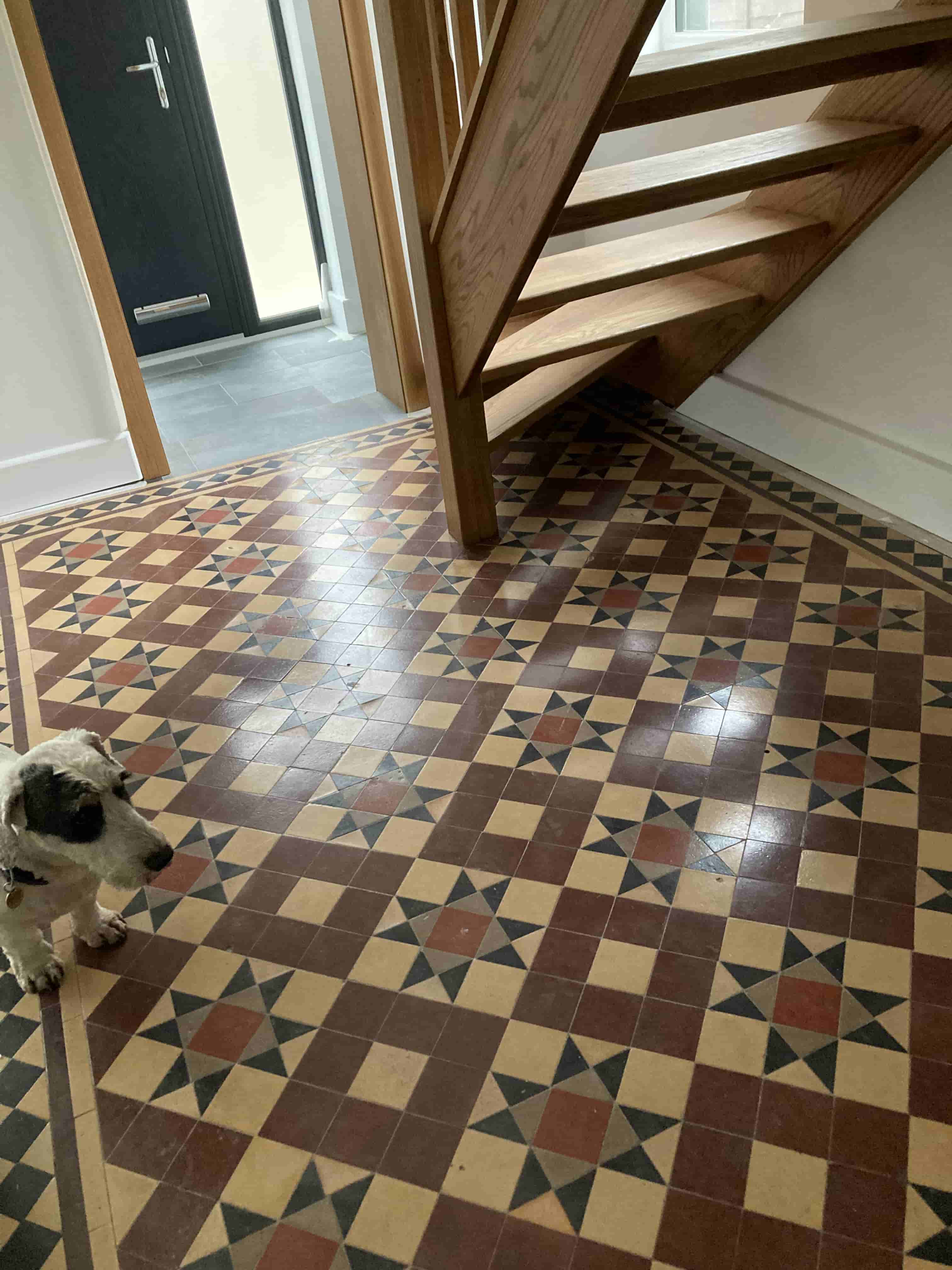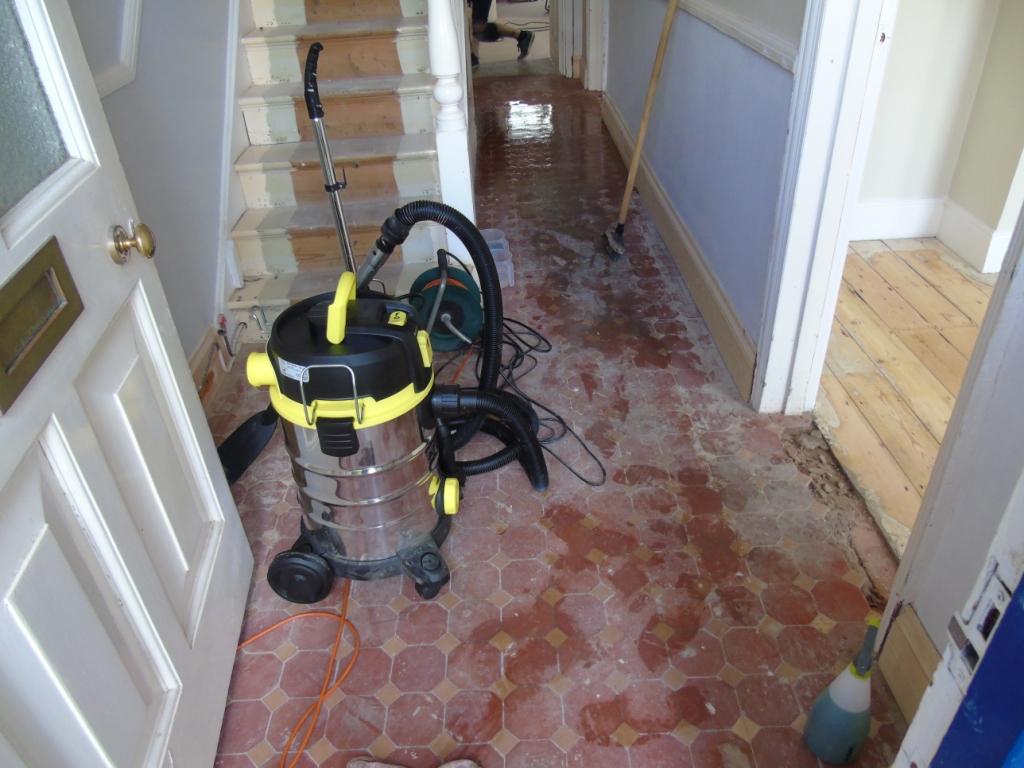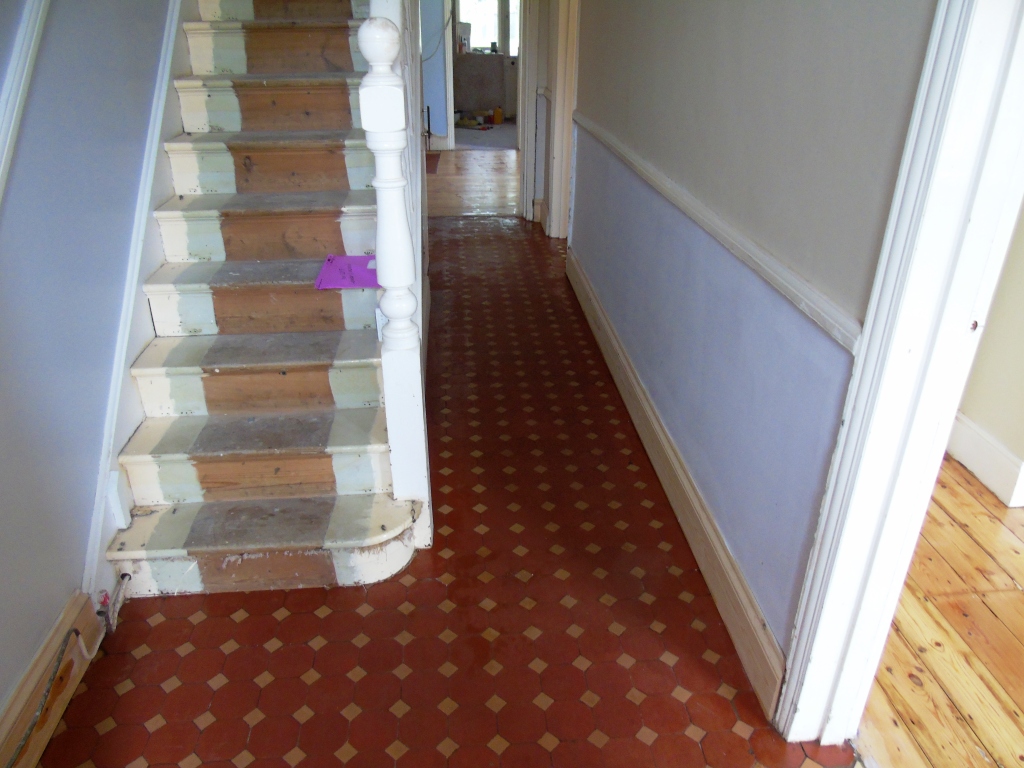Plaster Stained Victorian Tiled Hallway Renovated in Stonehouse
This client from the town of Stonehouse near Stroud contacted us about their Victorian tiled hallway following a recommendation by a neighbour. She wanted to get the floor renovated and had been struggling to find someone to complete the work. They had tried to clean the floor themselves but had little success and decided it was time to call in the experts.

The whole house was being renovated and unfortunately the contractor working on the hallway had not taken care to cover up the floor and it has subsequently become covered in all sorts of mess including a lot of plaster. I explained that it would not be an issue and was confident we could remove the plaster and renovate the floor back to health.
Happy with my quote we scheduled a date for our return which was following conclusion of the remaining renovation works.

Cleaning a Victorian Tiled Hallway Floor
Before starting the renovation of her floor, the first job was to cover the walls and skirting with masking film to protect the newly plastered walls from splashing during cleaning. Next and with a focus on removing the plaster a strong dilution of Tile Doctor Remove and Go was sprayed onto the tiles and left it to dwell for 10 minutes. Then using a Black scrubbing pad fitted to a rotary buffing machine the solution was scrubbed into to remove as much of the plaster and old coatings etc as possible. Once done the resultant slurry was vacuumed away using a wet extraction vacuum.
The next step was to treat the floor to an Acid Wash using Tile Doctor Acid Gel which was left for 5 minutes and then worked in with a coarse 100-grit pad. This treatment has a lot of benefits for tiled floors and is great for removing old grout smears and other contaminates such as salt staining. The floor was then wet vacuumed again and the process repeated with a finer 200-grit pad.
After another wet vacuum to extract the slurry, the floor was rinsed with water and extracted again. The floor was then left for two days to allow it to fully dry off.
Sealing a Victorian Tiled Hallway Floor
On our return the floor was tested with the damp meter to check it was dry. The moisture readings were good, so I was happy to go ahead with the sealing process.
I had discussed a desired finish with the customer earlier and as a result Tile Doctor Seal and Go Extra was chosen. This is a modern product that provides high stain resistance and is perfect for a hallway. It has a low sheen finish so does not make the floor too shiny, but allows the lovely colour of the tiles to shine through. Two coats of sealer were applied leaving each one to dry before the next was applied.

My client was amazed how well it came up and delighted that the contractors had not ruined her floor! For aftercare cleaning I recommended the use of Tile Doctor Neutral Tile Cleaner to maintain the floor going forward, this is an effective yet gentle tile cleaning product that won’t damage the sealer.

Professional Restoration of a Victorian Tiled Hallway in Gloucestershire
Plaster Stained Victorian Tiled Hallway Renovated in Stonehouse Read More »



























